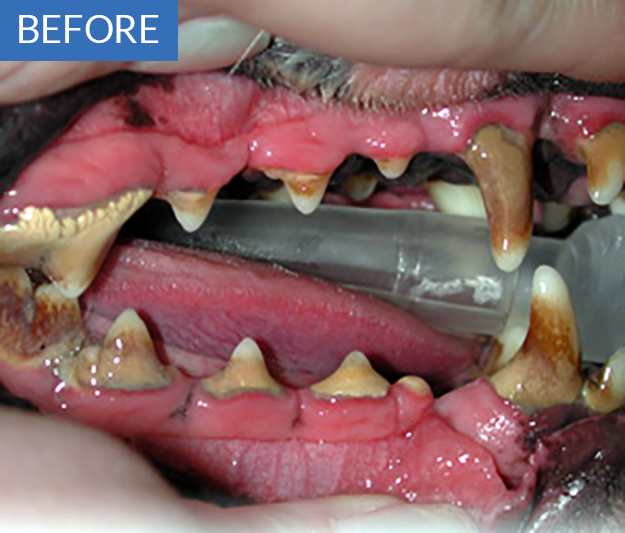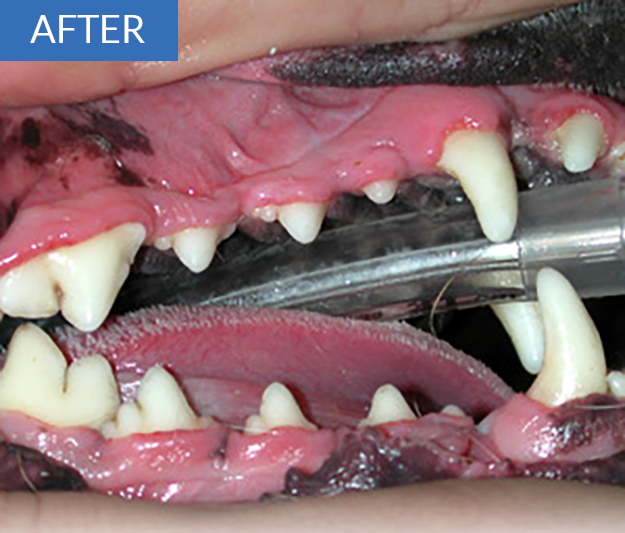At Fountain City Animal Hospital, we are deeply dedicated to helping you keep your pet’s teeth and gums healthy. Without any doubt, dental disease is the most common disease in dogs and cats, and sadly, the most under-treated. By the age of 3 years, 50% of cats and 85% of dogs have dental problems serious enough to warrant veterinary intervention, often requiring tooth extraction. Imagine the condition your mouth might be in if you didn’t brush your teeth for years on end. In animals, just as in humans, tartar begins in the mouth as plaque, a film of bacteria that can be scrubbed away by brushing, but in less than 36 hours, plaque begins to harden into tartar which then leads to gum disease. As tartar accumulates, infection attacks the area around the tooth root and destroys the surrounding tissue and bone that holds the tooth in place.
The results of unchecked dental disease in dogs and cats are no different from what humans experience and include the potential for inflammation and infection of other organs (heart, liver, kidneys), tooth loss, halitosis, and pain. Dogs and cats have evolved to be masters of masking pain (in the wild, any sign of weakness can lead to lower standing in the pack hierarchy or to be seen as prey rather than predator), but we know unequivocally that the progression of dental disease is considerably painful. Cats can experience a particularly painful phenomenon known as resorptive lesions, which are not much to look at but will result in exquisite pain. In these situations, the tooth enamel erodes and eventually exposes the dentin and pulp canal which houses the tooth’s blood vessels and nerves. The cause of resorptive lesions is still not understood, and their only treatment is extraction of the affected tooth.




